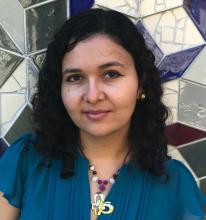Abstract:
For fourteen years the shuffle conjecture remained open. In essence, it gave a combinatorial formula for the Frobenius character of the space of diagonal harmonics in terms of word parking functions, which are certain symmetric functions that can be indexed by lattice paths. Concretely, the conjecture stated that this combinatorial sum was equal to the action of the ubiquitous nabla operator on the nth elementary symmetric polynomial. In a startling paper, Carlsson and Mellit proved this conjecture by introducing a new algebra, closely related to the double affine Hecke algebra, called \$A_{q,t}\$, and defining an important polynomial action for it. This algebra allowed them to perform operations on symmetric functions by lifting the corresponding structures via raising and lowering operators to certain higher level polynomial rings, performing the computations there, and then projecting them back. Shortly thereafter, using parabolic flag Hilbert schemes, the algebra and its representation was also realized geometrically by Carlsson, Gorsky, and Mellit, reaffirming its connection to the work of Haiman on the space of diagonal harmonics. I will introduce a topological interpretation of this algebra and its representation. Namely, I will describe how we can realize symmetric functions and the \$A_{q,t}\$ operators as braid diagrams on an annulus and how many of the complicated algebraic relations using plethysms in the original formulation follow trivially from isotopy of the diagrams. This paradigm not only eases many computations, it also informs us of new operators on symmetric functions that while natural from a topological perspective might be very difficult to see algebraically, thus yielding new light on an already rich structure. Of particular interest is its ability to potentially explain some of the many conjectures relating the homology of toric links and q,t combinatorics.
Note: This talk begins with a pre-seminar (aimed at graduate students) at 3:30–4:00. The main talk starts at 4:10.
Join Zoom Meeting: https://washington.zoom.us/j/
Meeting ID: 915 4733 5974
